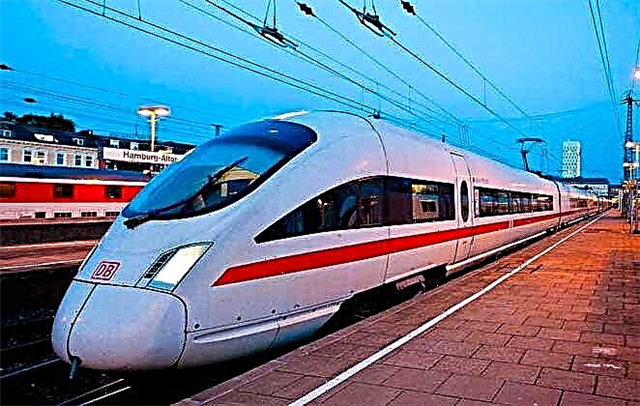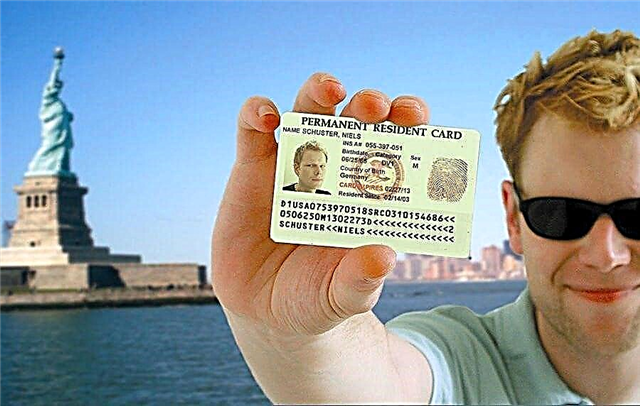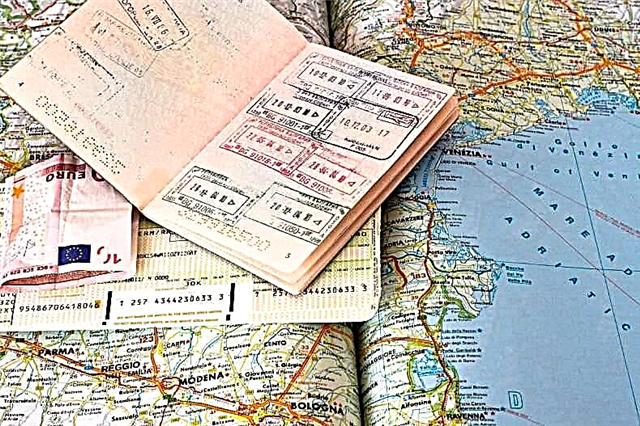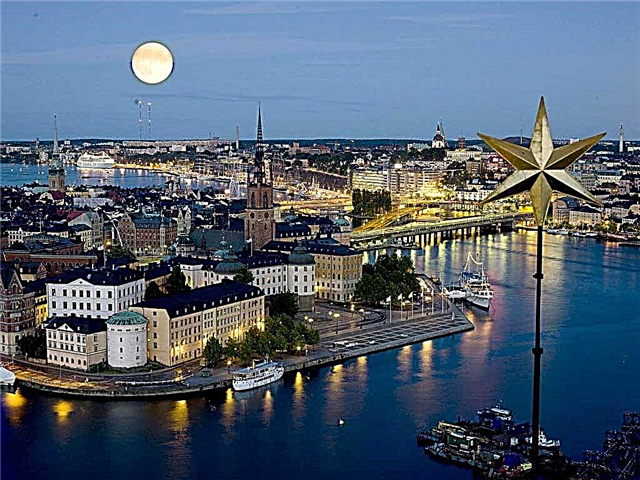Compulsory education for children in Estonia was introduced in the 17th century. Perhaps that is why today Estonian teenagers are among the ten most educated schoolchildren in the world in various rankings. This level of knowledge was greatly influenced by the total computerization of educational institutions, a serious approach to the selection of teachers and the refusal of a second year for those who do not succeed. It is understandable why more and more foreigners are striving to get an education in Estonia.

How the Estonian education system works
The acquisition of secondary school education by every child is regulated by the Constitution of the Republic of Estonia. The whole process is divided into three stages:
- preschool education;
- high school;
- higher education.
The system includes basic, vocational and additional education in Estonia. The educational scheme for children is oriented towards the European model, but there is no division into primary and secondary schools in the republic.
All educational institutions are divided into private and public. Both of them follow the general rules for constructing the education of children.
Education up to 17 years old is compulsory in the country. This also applies to children of migrants, regardless of the status of their parents.
The state closely monitors attendance and punishes parents who are irresponsible about this issue with administrative fines.
First stage
 Kindergartens in Estonia are available for Russians, Estonians and other residents of the republic, even if they are privately funded - the state covers half of the cost of educating a child.
Kindergartens in Estonia are available for Russians, Estonians and other residents of the republic, even if they are privately funded - the state covers half of the cost of educating a child.
According to the Education Act in the Republic of Estonia, a family should not spend more than 20% of their income on preschool education for children. Already at a young age, the child begins the process of socialization, with the help of professional teachers, he develops general skills - educational, play, creative, as well as self-regulation skills.
In kindergartens, teaching is conducted in Estonian. If the baby speaks another language, he starts learning Estonian from the age of three. Upon graduation from preschool, the child is issued a special card confirming readiness for school.
Primary education in Estonia as such is not separated into a separate stage. From 7 to 17 years old, children go to secondary school. The choice of school does not depend on the parents, but on the area of residence of the family - the place will be provided in the educational institution that is located closest to the student's home.
All schools in the country have a unified curriculum. The main stage of study lasts from the first to the ninth grade.
At the first stage (from 1st to 3rd grade), children receive basic knowledge in general subjects: mathematics, Estonian, English, physical education, visual arts. Emphasis is also placed on the development of personal qualities and creative abilities in schoolchildren.
All schools are connected to a single electronic system, where you can not only track your child's progress and receive comments from teachers. You can download a certificate into the system if the child was on sick leave, you can find out homework in it, receive information about school events and activities.
Take a sociological survey!
[yop_poll id = ”14 ″]
Secondary education in Estonia
The secondary school system includes:
- 2nd stage - from 4th to 6th grades;
- 3rd level - from 7th to 9th grades.
The transition from one class to another is carried out on the basis of grades. If the student has not mastered the program and needs to be re-taught in this class, during the summer holidays a tutor is assigned to him and additional lessons are provided. Estonia has long given up on leaving students for the second year.

How many years they study in school in Estonia is regulated by the state. As mentioned above, compulsory education lasts up to 17 years. But after the 9th grade, every student is faced with a choice:
- get a gymnasium education and prepare for university entrance;
- graduate from a vocational school and start working immediately after receiving a diploma.
Education in gymnasiums is conducted in the state language of the country, but exams in some schools can be taken in Russian. Thus, how many classes there are in an Estonian school depends on the student's choice after the 9th grade. Special education in a vocational school lasts 3 years.
One of the main subjects at all stages of the school is computer science, which belongs to the category of cross-cutting disciplines - it is introduced into all other subjects. Programming and robotics were also introduced into the school curriculum.
Modern approaches to organizing the process do not yet exclude the use of paper textbooks and teaching materials.
 The Estonian educational system has another remarkable feature. The office of the headmaster is elective. The largest competition is always celebrated in Tallinn public schools - up to 30 people per vacancy. The choice is made with the participation of a special council, which includes parents, teachers, city officials and the students themselves.
The Estonian educational system has another remarkable feature. The office of the headmaster is elective. The largest competition is always celebrated in Tallinn public schools - up to 30 people per vacancy. The choice is made with the participation of a special council, which includes parents, teachers, city officials and the students themselves.
Homework at the school stage is compulsory. Estonia has decided not to abandon this component of the educational process.
Education in Russian in Estonia is still available for foreigners. There are also many schools in the country with in-depth study of a foreign language. In some of them even parents can get 1 free lesson a week in a foreign language so that they can help their child with homework at home.
Features of higher education
Enrollment in universities in the republic is carried out on the basis of final examinations, which complete secondary education in Estonia. It is the grades in the school certificate that allow the selection committee to hold a competition among applicants.
All higher education institutions in Estonia are divided into applied and proper universities. The former specialize in one specific area. The latter offer a large number of specialties and faculties to choose from.
The stages of training are standard:
- bachelor's degree;
- magistracy;
- doctoral studies.
In total, the country's universities offer more than 100 programs, including those that can be taken in English. Getting higher education in Estonia today is considered a profitable investment of time and money, since the diplomas of Estonian universities are recognized in all EU states.
Choosing a university
 In total, in the Republic of Estonia in 2021 there are 6 state universities and 3 private universities. Information technology is a prestigious area.
In total, in the Republic of Estonia in 2021 there are 6 state universities and 3 private universities. Information technology is a prestigious area.
In the national ranking, Estonian universities are ranked in the following order:
- University of Tartu. It is the country's leading educational institution, founded by the King of Sweden in 1632. Every year the university is included in the top 600 universities in the world. The number of students is about 16 thousand people. The key areas are: jurisprudence, philosophy, social and economic sciences, computer science and mathematics, medicine. Tuition fees range from 3,000 to 11,000 euros.
- Tallinn University of Technology. Founded in 1918. It is also one of the best universities in the state that graduate technical specialists. About 12 thousand students study here, of which about 2 thousand are foreigners. Leading areas: electronics, medicine, engineering, industry. Many programs in English have been developed for foreigners.Tuition costs 2,500-3,000 euros per year.
- Tallinn University. The leading directions are the humanities and social sciences. The price of an academic year reaches 4,000 euros. The total number of students is 9,000. The university prepares professional teachers who can easily get a job not only in Estonia, but also in other EU countries.
- Estonian University of Life Sciences. The history of the university begins in 1951. The number of students does not exceed 6,000. Leading areas: architecture, veterinary medicine, construction, biology, forestry, water and agriculture.
- Academy of Arts. He specializes in the following areas: theater art, musicology, directing, choreography. In total, no more than 700 students study here, 100 of them are foreigners. The cost of training reaches 5,000 euros per year.
- Estonian Business School. Founded in 1988. The cost of training reaches 5,000 euros per year. The number of students is about 2000 people. Leading directions: business and management, economics, informatics.
How to enter an Estonian university
The process of admission to an Estonian university begins with the choice of an educational institution. To do this, you need to go to the university website, study which study programs in Estonia are available for foreign students, read reviews and send your application for consideration. All applications and documents are submitted electronically.
Applicants are selected based on graduation marks. Additional exams are possible only for admission to creative specialties.
You will also have to pass an exam in Estonian or English.
Package of documents
 The list of documents that must be provided for admission to the selected university can be clarified on the website of the educational institution. It may differ slightly from university to university.
The list of documents that must be provided for admission to the selected university can be clarified on the website of the educational institution. It may differ slightly from university to university.
Most often, the list includes:
- Application form.
- Certificate of complete secondary education with a statement of grades.
- Certificate of passing the language exam.
- Autobiography.
- A copy of the applicant's foreign passport.
- Motivation letter explaining why this particular university became the target.
Sometimes recommendations are requested from teachers and copies of certificates, diplomas and other documents confirming personal achievements in studies and sports.
Documents written in a foreign language must be translated into English or Estonian. Passport and certificate must be notarized.
Upon admission to medical specialties, a certificate of passing the SAT in Biology (Academic Assessment Test) must be provided. Russian applicants do not need to nostrify a diploma or certificate of education received in Russia: the two countries have an Agreement on the Equivalence of Educational Documents and Academic Degrees.
Obtaining a visa
 As soon as the application is approved, the educational institution in Estonia will send the applicant an invitation, on the basis of which he will be able to obtain a student visa.
As soon as the application is approved, the educational institution in Estonia will send the applicant an invitation, on the basis of which he will be able to obtain a student visa.
For study in the country, a visa permit of category D (national visa) is issued. Both students and schoolchildren can arrange it.
The issuance of visas is handled by the consular departments of the Republic of Estonia in the applicant's country of residence.
From the documents you will need:
- Visa application.
- Foreign passport and its copy.
- Civil passport with copies of completed pages.
- Medical insurance.
- An invitation from the university.
- Financial guarantees.
- Photo.
- Confirmation of housing availability.
- Certificate of no criminal record.
- Health certificate.
It may take from two weeks to a month to review the request. A bank statement or a sponsorship letter confirming that the sponsor has funds can act as financial guarantees.
How much does the training cost and how long does it take?
 How much it costs to study in Estonia for Russians depends on many factors:
How much it costs to study in Estonia for Russians depends on many factors:
- the prestige of the university;
- chosen specialty;
- the city in which the educational institution is located;
- program;
- duration of training;
- stage of study (bachelor's degree, etc.).
On average, one academic year will have to pay from 2,300 to 5,000 euros. The most expensive will be to study at Tartu and Tallinn universities, which train the best teachers, doctors and IT specialists in the country.
Tuition fees for foreign students in Estonia also include living expenses. The table shows the average budget per month per person:
| Expenditure item | Amount in Euro |
|---|---|
| Lodging | 200 |
| Nutrition | 250–270 |
| Transport | 70–80 |
| Communications and utility bills | 100–120 |
| Sports and recreation | 100–110 |
| clothing | 80–100 |
| total amount | 800–900 |
As for the duration of the educational process, the student expects something like this:
- 3-4 years will have to unlearn to obtain a bachelor's degree. At this stage, they receive basic knowledge of the profession.
- Master's degree will take 2 years. Upon graduation, the student receives the status of a qualified specialist.
- those who want to get a doctorate will have to spend another 3 years at the university.
Students enrolled in the specialties of medicine, pharmaceuticals, architecture will have to devote to study for 6 years or more.
The possibility of obtaining scholarships and grants
 The question whether education in Estonia is paid or free is important for everyone who comes here from abroad. But it is worth noting that foreigners can apply for a free program on an equal basis with state residents. For this, various grants and scholarships are provided from universities, foundations and municipal authorities.
The question whether education in Estonia is paid or free is important for everyone who comes here from abroad. But it is worth noting that foreigners can apply for a free program on an equal basis with state residents. For this, various grants and scholarships are provided from universities, foundations and municipal authorities.
The types of financial support from universities can be very different:
- for excellent academic performance;
- for success in sports;
- for students from low-income families;
- as an aid to the fraternal peoples.
You need to contact the International Student Assistance Departments, which work at all universities in the country.
The grants are mainly designed for those who are studying in master's and doctoral studies and are engaged in research activities. It is quite possible to get money to develop start-ups in the high-tech sector.
About the life of Estonian students
Foreigners feel the difference in how student life proceeds in everything, from the structure of the educational process to living on campuses. If in their own realities, many are accustomed to copying and downloading other people's abstracts, then in Estonian universities they will have an independent choice of subjects and the process of in-depth analysis and structuring of information on their own.
In Estonia, students are allowed to combine study and work. But it is extremely difficult to do this, since you will need knowledge of the Estonian language.
Even more often, students are faced with the problem of coincidence of the schedule of classes and work. For this reason, most often young people get a job as waiters or assistants in the kitchen.
Accommodation is not provided by all universities and not all students. Usually there are fewer rooms than there are people who want to live in them. The living quarters are located in blocks - one kitchen and a bathroom are for 4-6 students. The cost of such a settlement is from 100 euros.
Students also eat most often on campuses - in student canteens and cafes.
Outcomes
A comparative analysis of the pros and cons of studying in Estonia will allow making the final decision:
| Advantages | disadvantages |
|---|---|
| the presence of a large number of student organizations that allow students to develop outside of seminars and lectures; | high cost of living expenses; |
| obtaining a residence permit for the period of study and a high probability of obtaining permanent residence after its completion; | Difficult language; |
| visa-free travel within the EU; | low probability of finding a part-time job without knowing the Estonian language; |
| obtaining quality education in key areas in which Estonian universities specialize - pedagogy, IT, medicine; | limited choice of educational institutions |
| Estonia is a country of great opportunities for startups. Those planning their future as entrepreneurs are unlikely to find a better place to start a project; | |
| relatively low prices for training; | |
| the opportunity to get into a free program; | |
| the ability to combine study and work |
Estonian university graduates get a good opportunity to find work not only in the republic itself, but also in other EU countries.











